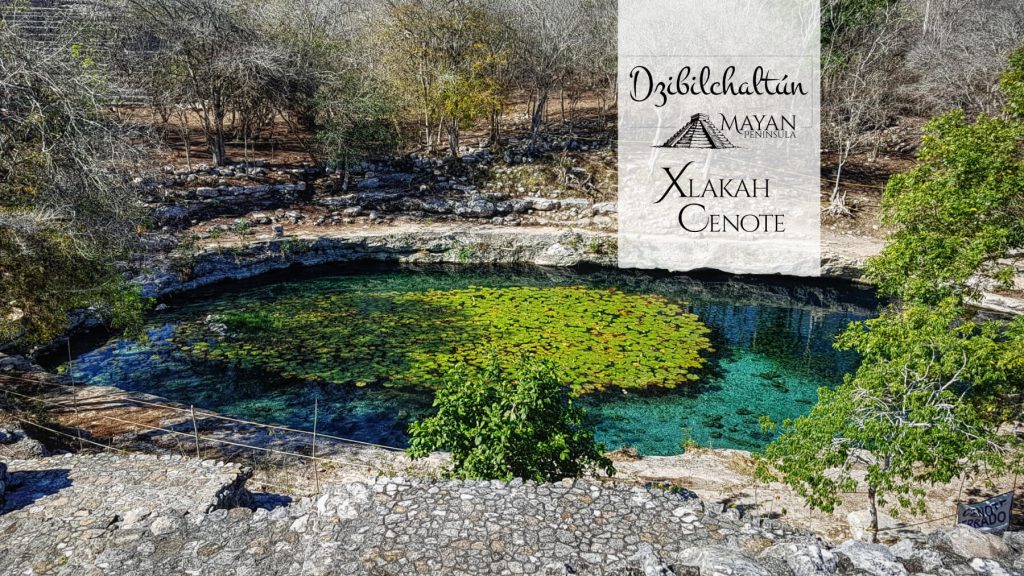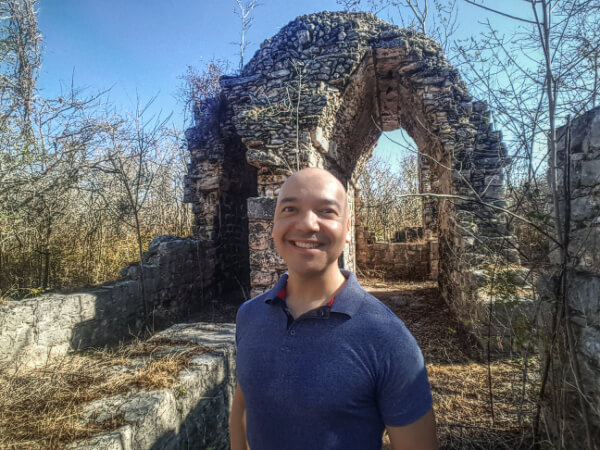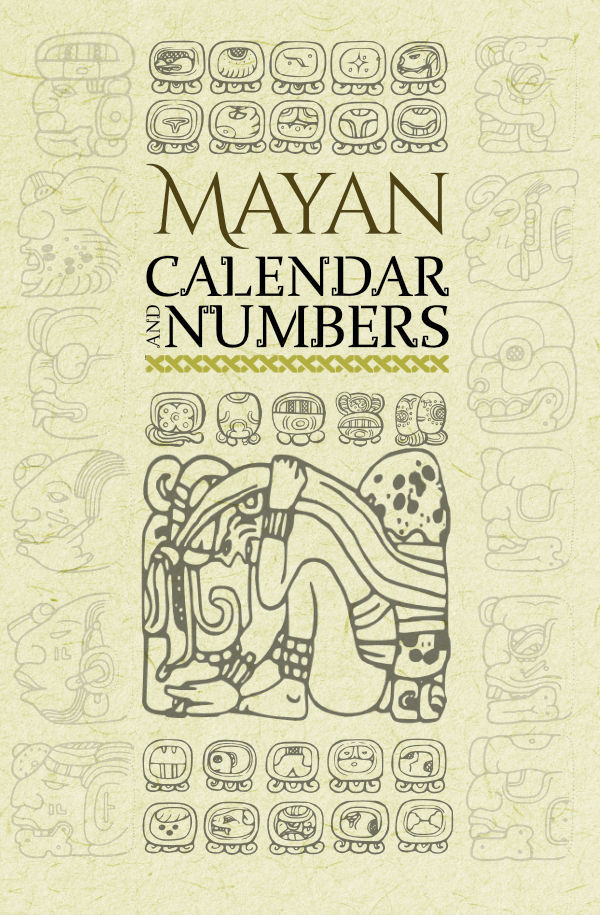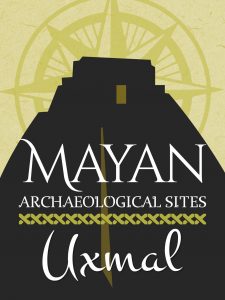Don’t forget to visit the Xlakah Cenote in Dzibilchaltun and bring your swimsuit because you can swim in this Cenote’s crystalline waters that are covered with lilies floating on the surface.

Note: Keep in mind that the Cenotes have elaborated underground currents, so depending on the weather and the season, the waters may not be as transparent as in this photo.
The Cenote Xlakah is one of the largest and deepest found to date in Yucatan, but don’t worry about this because it’s not even visible, the part you can swim in has an average of 1 or 2 meters deep.
The habitat that surrounds Dzibilchaltun, and most of the Mayan Peninsula is a calcareous plain, with no surface water, except for cenotes with permanent water at ground level. Under the soil in this Mayan Archaeological Site, the water level is 3 m, which is why its inhabitants were able to dig wells, expanding shallow natural cavities to reach the water in the subsoil.
The first settlers of that region got to Dzibilchaltun during the Middle Preclassic and the Late Preclassic (500 BCE – 250 CE). Maybe because of this the cenote was called, in Mayan language, Xlakah, which means “old town”.
Legend of the creation of the Xlakah Cenote in Dzibilchaltun
Legend has it that an old and tired man came to his son’s house to ask for a piece of bread and the ungrateful son, despite enjoying many comforts, refused to give food to his father. A god, seeing this, took the appearance of the old man and went to ask for help from the son who refused again. Then, that god, to punish the ungrateful son, caused a thunderbolt to fall on his house where the ground sank and the Xlakah cenote formed.
Legend of Santa Ursula
According to another legend, Saint Ursula, a revered saint from the nearby town of Chablekal lived in the Xlacah Cenote but later went to live in the Open Chapel.
Because of this, the Open Chapel became the church of Chablekal and the inhabitants of this town left a girl in the chapel of Dzibilchaltún, mimicking the ancient practices of sacrifices in exchange for requested favors.
The older sister of Santa Ursula still lives in the cenote and the youngest, called Concepción, also left the cenote and went to Izamal.
Findings inside the Xlakah Cenote
In this Cenote, just like the one found in Chichen Itza, a large number of archaeological pieces like carved bones and wooden objects, but mainly vases, have been found. Valuable information about the ancient Mayans who lived near the cenote was found here.
Physical description of the Xlakah Cenote in Dzibilchaltun
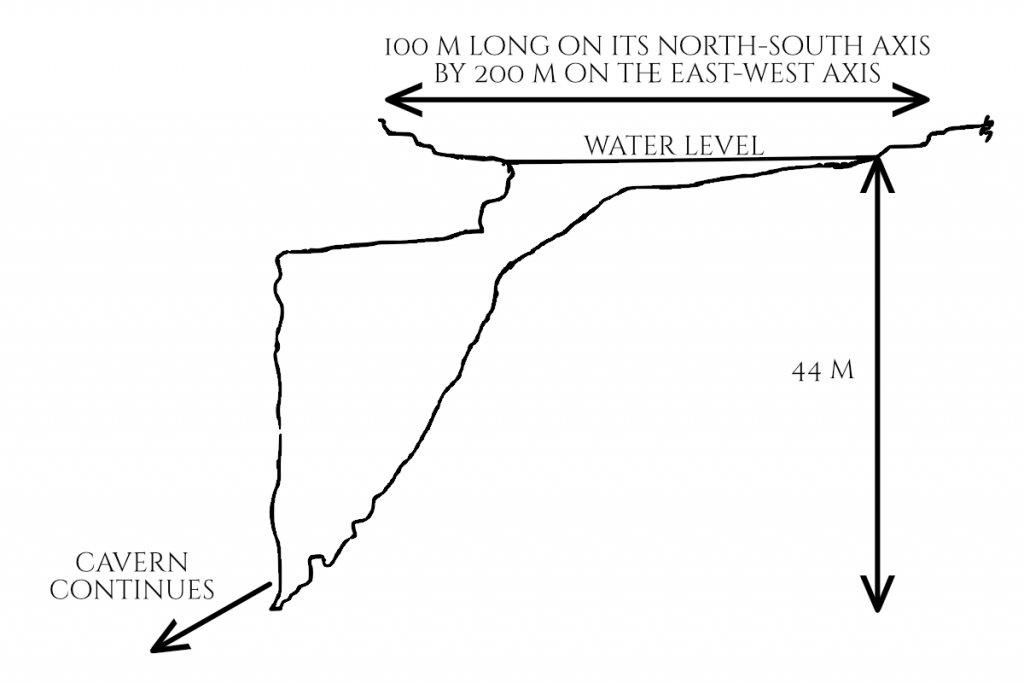
This natural pond measures around 100 m long on its north-south axis, by 200 m on the east-west axis. In its deepest part, it takes an inclined shape and reaches 44 m in the northeast side towards where a wide horizontal and dark cavern opens, the end of it is still unknown.
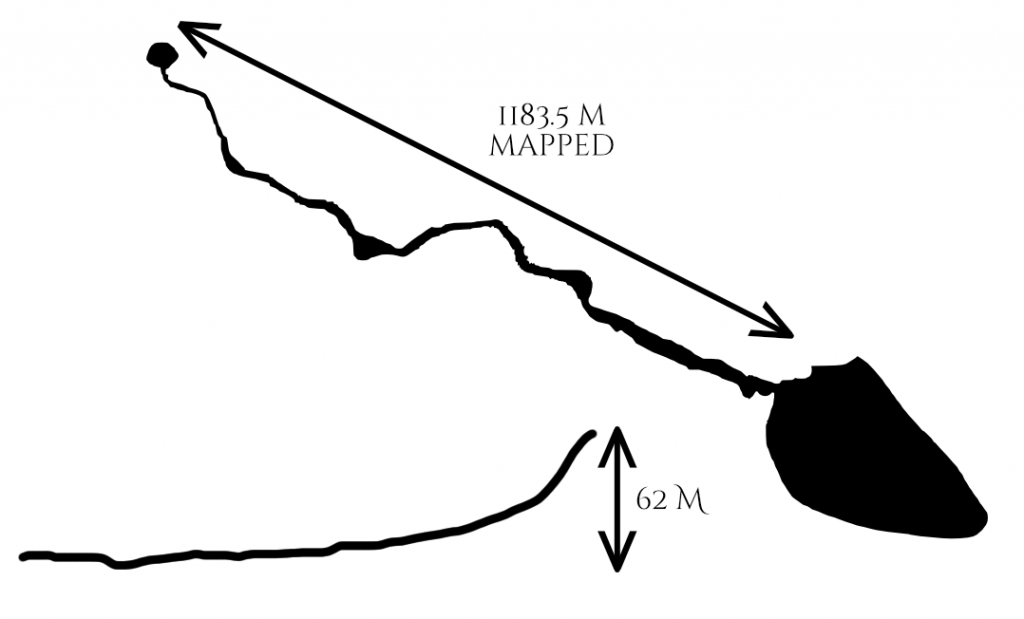
Divers have mapped the cavern and found it’s 1183.5 meters in length and 62 deep. The studies are not concluded and it’s probably longer than
The ancient Mayans protected the edge of the cenote with retaining walls and built a medium platform very close to it. At its eastern end, which is the shallowest, there was another small platform, now gone, that reached the Cenote and allowed the population to dispose of water easily.

Location of the Xlakah Cenote in Dzibilchaltun

The Xlakah Cenote in Dzibilchaltun is located near the center of the Archaeological Site. To get here you can go through the Central Plaza, where you can find other buildings like the Old Chapel, the Structures 44, and 36.

